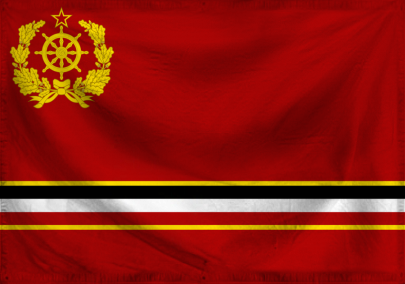

![]() by Blakullar » Sun Jul 31, 2016 10:28 am
by Blakullar » Sun Jul 31, 2016 10:28 am

![]() by Gigaverse » Sun Jul 31, 2016 1:43 pm
by Gigaverse » Sun Jul 31, 2016 1:43 pm
Art-person(?). Japan liker. tired-ish.
Student inlinguistics???. On-and-off writer.
MAKE CAKE NOT stupidshiticanmakefunof.born in, raised in and emigrated from vietbongistan lolol
Operating this polity based on preferences and narrative purposes
clowning incident | clowning incident | bottom text
can produce noises in (in order of grasp) vietbongistani, oldspeak
and bonjourois (learning weebspeak and hitlerian at uni)

![]() by Anollasia » Sun Jul 31, 2016 1:52 pm
by Anollasia » Sun Jul 31, 2016 1:52 pm

![]() by Newne Carriebean7 » Sun Jul 31, 2016 2:23 pm
by Newne Carriebean7 » Sun Jul 31, 2016 2:23 pm
Krugeristan wrote:This is Carrie you're referring to. I'm not going to expect him to do something sane anytime soon. He can take something as simple as a sandwich, and make me never look at sandwiches with a straight face ever again.
Former Carriebeanian president Carol Dartenby sentenced to 4 years hard labor for corruption and mismanagement of state property|Former Carriebeanian president Antrés Depuís sentenced to 3 years in prison for embezzling funds and corruption

![]() by Aterria » Sun Jul 31, 2016 3:50 pm
by Aterria » Sun Jul 31, 2016 3:50 pm
IMPERIAL BROADCASTING CENTER No real news as of today
![]() by WTF State » Mon Aug 01, 2016 11:54 pm
by WTF State » Mon Aug 01, 2016 11:54 pm

![]() by Merchpolis » Tue Aug 02, 2016 12:44 am
by Merchpolis » Tue Aug 02, 2016 12:44 am

![]() by Outer Sparta » Tue Aug 02, 2016 1:14 am
by Outer Sparta » Tue Aug 02, 2016 1:14 am

![]() by Herador » Tue Aug 02, 2016 1:28 am
by Herador » Tue Aug 02, 2016 1:28 am

![]() by The Soviet German Union » Tue Aug 02, 2016 7:42 am
by The Soviet German Union » Tue Aug 02, 2016 7:42 am
| The Great Nation of The Soviet German Union | Personal Opinion | |
|
| Pro: State-Planned Economy, Nationalism, Jingoism, Reactionism, Ethopluralism, Pan-Nationalism, Pan-Slavism, Greater Serbia, Greater Israel, Closed Borders, Schengen, AfD, Donald J. Trump, |
|
| Neutral: Conservatism, Secular Religions (not Islam), |
|
| Anti: Liberalism, Capitalism, Multipluralism, "Palestine", Islam, Mass Immigration, high taxes, CDU/SPD/FDP/Die Linke, |
| Proud Voter of ADR! (Luxembourg's Trump) |

![]() by United Sates of Merica » Tue Aug 02, 2016 7:45 am
by United Sates of Merica » Tue Aug 02, 2016 7:45 am

![]() by Oceara » Tue Aug 02, 2016 9:58 am
by Oceara » Tue Aug 02, 2016 9:58 am

![]() by Secilian Federation » Tue Aug 02, 2016 10:05 am
by Secilian Federation » Tue Aug 02, 2016 10:05 am

![]() by Rebirth Union » Tue Aug 02, 2016 10:58 am
by Rebirth Union » Tue Aug 02, 2016 10:58 am
BREAKING NEWS: The UUSC has published a new report of all Pandora planets.

![]() by The Republic Of Arkan » Tue Aug 02, 2016 11:00 am
by The Republic Of Arkan » Tue Aug 02, 2016 11:00 am

![]() by New Phyrreus » Tue Aug 02, 2016 3:18 pm
by New Phyrreus » Tue Aug 02, 2016 3:18 pm
Advertisement
Return to Factbooks and National Information
Users browsing this forum: No registered users
Advertisement